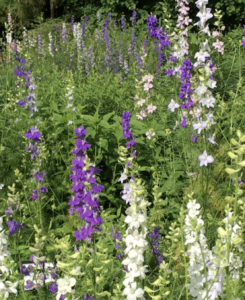Gardening Tips
go.ncsu.edu/readext?608677
en Español / em Português
El inglés es el idioma de control de esta página. En la medida en que haya algún conflicto entre la traducción al inglés y la traducción, el inglés prevalece.
Al hacer clic en el enlace de traducción se activa un servicio de traducción gratuito para convertir la página al español. Al igual que con cualquier traducción por Internet, la conversión no es sensible al contexto y puede que no traduzca el texto en su significado original. NC State Extension no garantiza la exactitud del texto traducido. Por favor, tenga en cuenta que algunas aplicaciones y/o servicios pueden no funcionar como se espera cuando se traducen.
Português
Inglês é o idioma de controle desta página. Na medida que haja algum conflito entre o texto original em Inglês e a tradução, o Inglês prevalece.
Ao clicar no link de tradução, um serviço gratuito de tradução será ativado para converter a página para o Português. Como em qualquer tradução pela internet, a conversão não é sensivel ao contexto e pode não ocorrer a tradução para o significado orginal. O serviço de Extensão da Carolina do Norte (NC State Extension) não garante a exatidão do texto traduzido. Por favor, observe que algumas funções ou serviços podem não funcionar como esperado após a tradução.
English
English is the controlling language of this page. To the extent there is any conflict between the English text and the translation, English controls.
Clicking on the translation link activates a free translation service to convert the page to Spanish. As with any Internet translation, the conversion is not context-sensitive and may not translate the text to its original meaning. NC State Extension does not guarantee the accuracy of the translated text. Please note that some applications and/or services may not function as expected when translated.
Collapse ▲Summer is here and the gardening is easy! Here are a few tips to help keep your garden in shape:
- No need for a special tool, just use pliers to pull up woody seedlings and weeds. Grip the stem at the soil line, twist it around the pliers, and pull straight up. Watering deeply the day before pulling weeds makes the job easier.
- Soil with a high pH can cause leaf yellowing (chlorosis) of some shade trees. If you suspect alkaline soil to be the cause of leaf yellowing on one of your trees, have a soil test done to determine soil pH. High soil pH limits the availability of micronutrients. You can pick up soil test kits at the N.C. Cooperative Extension of Union County office or at any Union County Library.
- Lace bugs feed on azaleas, rhododendron, pyracantha and other woody plants, causing a gray, blanched or stippled appearance on the upper surface of the leaves. Take steps to control them as soon as you notice the damage.
- Plants wilt from a lack of oxygen as well as a lack of water. When the soil is compacted, the plant’s tender feeder roots and root hairs suffocate. The problem is compounded when the well-meaning gardener assumes that the wilting is a sign of water stress and immediately irrigates. Well-aerated soil, enriched with organic matter, allows both air and water to circulate freely about the root system for a vigorous plant.
- Make sure that newly planted trees and shrubs receive a thorough soaking each week if rainfall is insufficient. Soak the ground, do not sprinkle it lightly. Apply organic mulch to conserve moisture.
- When dead or damaged branches are found on shrubs or trees, prune them out immediately.
Join the Extension Master Gardener℠ volunteers of Union County at their Teaching Garden at the Union County Agriculture Center for Ask a Master Gardener and a mini plant sale in celebration of Pollinator Week earlier this month. 9 a.m. is the start time.





